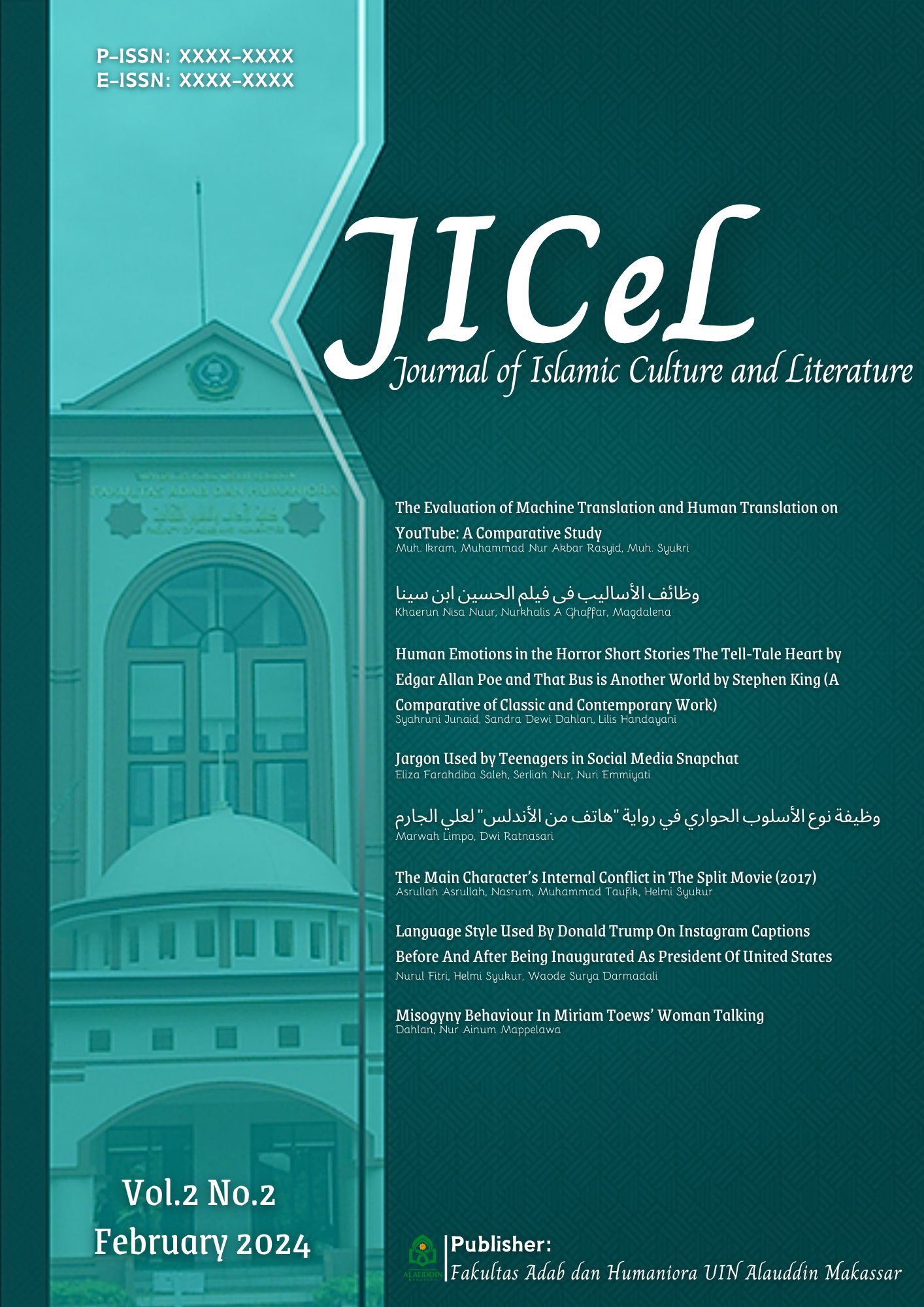Jargon Used by Teenagers in Social Media Snapchat
Jargon by Teenagers
Abstract
Snapchat has become one of the most popular social media platforms among teenagers, and its use is often accompanied by quirky terms or jargon. This study aims to examine the forms and functions of this jargon. The research method used is a qualitative approach by conducting observation participants where the researcher acts as a participant in the activity or situation being observed and used two theories; Halligan's theory (2004) as a form of jargon suggests that the use of jargon in teenagers can reflect their efforts to convey their group identity and shows a sense of closeness in the Snapchat community and Jakobson's theory (1960) as a language of function to analyze the terms of jargon in teenagers communication on the Snapchat. The data were obtained from Snapchat conversations that featured jargon. The researcher found 37 jargon items across ten accounts with an even split of five boys and five girls from various countries, Malaysia, Philippines, Indonesia, England, Norway, New York, United States, and Finland, with the identified users ranged in age from 18 to 24 years old. The jargon forms that the researcher has found were categorized into words (8), phrases (7), acronyms (5), and abbreviations (17), while the functions were identified as referential (9), poetic (1), conative (9), emotive (7), phatic (8), and metalingual (3).
Keywords: Jargon, Snapchat, Social Media
Authors who publish with this journal agree to the following terms:
1) Authors retain copyright and grant the journal right of first publication with the work simultaneously licensed under a Creative Commons Attribution License that allows others to share the work with an acknowledgement of the work's authorship and initial publication in this journal.
2) Authors are able to enter into separate, additional contractual arrangements for the non-exclusive distribution of the journal's published version of the work (e.g., post it to an institutional repository or publish it in a book), with an acknowledgement of its initial publication in this journal.
3)Authors are permitted and encouraged to post their work online (e.g., in institutional repositories or on their website) prior to and during the submission process, as it can lead to productive exchanges, as well as earlier and greater citation of published work (See The Effect of Open Access).

3.png) Scopus ID:
Scopus ID:_3.png) ORCHID ID:
ORCHID ID:
3.png) G-Scholar ID:
G-Scholar ID:
3.png) SINTA ID:
SINTA ID:

